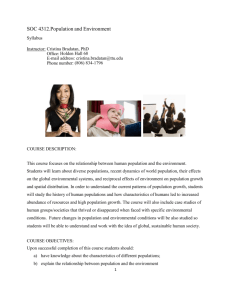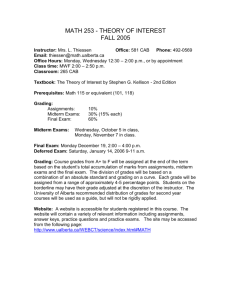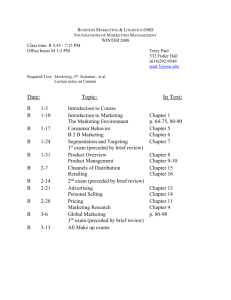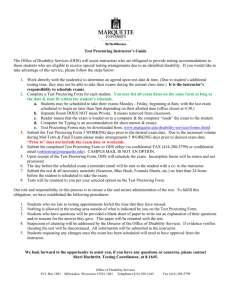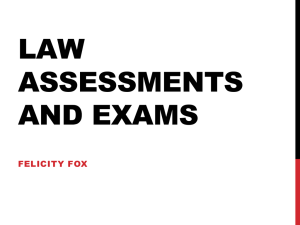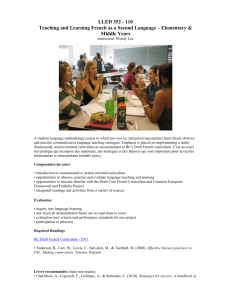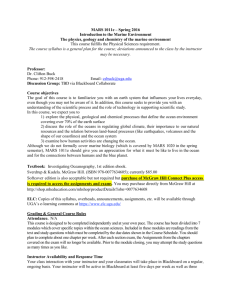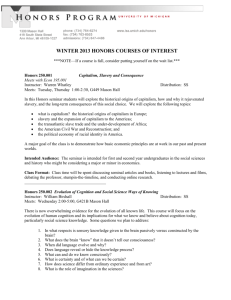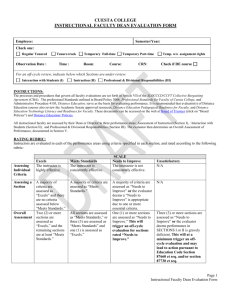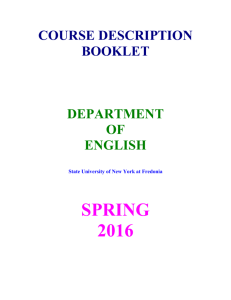Course Review Checklist - Northwestern Oklahoma State University
advertisement
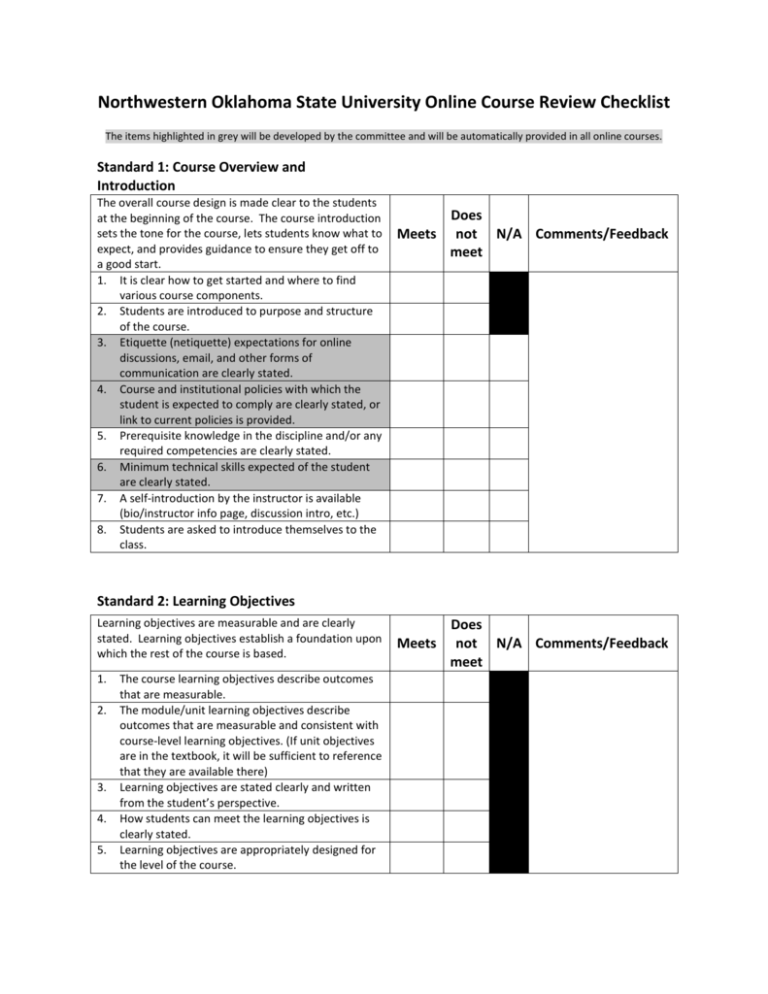
Northwestern Oklahoma State University Online Course Review Checklist The items highlighted in grey will be developed by the committee and will be automatically provided in all online courses. Standard 1: Course Overview and Introduction The overall course design is made clear to the students at the beginning of the course. The course introduction sets the tone for the course, lets students know what to expect, and provides guidance to ensure they get off to a good start. 1. It is clear how to get started and where to find various course components. 2. Students are introduced to purpose and structure of the course. 3. Etiquette (netiquette) expectations for online discussions, email, and other forms of communication are clearly stated. 4. Course and institutional policies with which the student is expected to comply are clearly stated, or link to current policies is provided. 5. Prerequisite knowledge in the discipline and/or any required competencies are clearly stated. 6. Minimum technical skills expected of the student are clearly stated. 7. A self-introduction by the instructor is available (bio/instructor info page, discussion intro, etc.) 8. Students are asked to introduce themselves to the class. Does Meets not N/A Comments/Feedback meet Standard 2: Learning Objectives Learning objectives are measurable and are clearly stated. Learning objectives establish a foundation upon which the rest of the course is based. 1. 2. 3. 4. 5. The course learning objectives describe outcomes that are measurable. The module/unit learning objectives describe outcomes that are measurable and consistent with course-level learning objectives. (If unit objectives are in the textbook, it will be sufficient to reference that they are available there) Learning objectives are stated clearly and written from the student’s perspective. How students can meet the learning objectives is clearly stated. Learning objectives are appropriately designed for the level of the course. Does Meets not N/A Comments/Feedback meet Standard 3: Assessment and Measurement Assessment strategies are designed to evaluate student progress of stated learning objectives; to measure the effectiveness of student learning; integral to learning process. 1. The types of assessments selected measure the stated learning objectives and are consistent with the course activities and resources. 2. The course grading policy is clearly stated. 3. 4. Meets Does not N/A Comments/Feedback meet Specific and descriptive criteria are provided for the evaluation of students’ work; tied to the course grading policy. Students have multiple opportunities to measure their own learning progress. Standard 4: Instructional Materials Instructional materials are sufficiently comprehensive to achieve stated course objectives and learning outcomes. 1. 2. 3. Does Meets not N/A Comments/Feedback meet The instructional materials contribute to the achievement of the stated course/unit objectives. The purpose of the instructional materials and how they are to be used for learning is clear. The distinction between required and optional material is clearly explained. Standard 5: Learner Interaction and Engagement Forms of interaction incorporated in the course motivate students and promote learning. This standard includes student-instructor, student-content, and student-student interactions. Courses should integrate multiple forms of interaction. 1. Learning activities promote the achievement of the stated course/unit learning objectives. 2. Learning activities provide opportunities for interaction that support active learning. 3. Instructor has provided a plan for classroom response time, including feedback on assignments. 4. The requirements for student interaction are clearly articulated. Meets Does not N/A Comments/Feedback meet Standard 6: Course Technology Course navigation and technology support student engagement and ensure access to course components. 1. 2. 3. Does Meets not N/A Comments/Feedback meet The tools and media support the course/unit learning objectives. Course tools and media support student engagement and active learning. Navigation throughout the online components is logical, consistent, and efficient. Standard 7: Learner Support The course facilitates student access to institutional support services essential to student success. 1. 2. 3. 4. The course provides instructions or links to technical support offered and how to access services. Course instructions articulate or link to institutions accessibility policies and services. Guidance on how to obtain an accommodation is provided (ADA services). Course instructions articulate or link to institutions academic support services and other resources that can help the students succeed, and how to access these services. Course instructions articulate or link to student support services and how to access these resources. Meets Does not N/A Comments/Feedback meet Additional Online Quality Assurances Appropriate security measures are included to ensure academic integrity. Does Meets not N/A Comments/Feedback meet 1. Assessments are used throughout the course. (not just at the end) 2. A variety of assignments and assessment methods are used to increase rigor and provide instructor multiple ways to assess student performance consistency. (not just exams) 3. The course adheres to the online course exam proctoring policy and it is clear which of the exams will have the proctoring requirement. Which of the following strategies /tools are used to ensure academic integrity (select all that apply): □ A proctor or proctoring technology is used □ Date restrictions are used on in the course assignments □ Exams are password protected □ Time limits are placed on exams □ Questions on exams are seen 1 per page □ Lockdown browser tool is used □ Plagiarism software is used on written exams, assignments, projects, etc. □ Exams are composed of random questions from a larger pool to ensure students have equivalent but different online tests. □ Other: _______________________________________________________ Appropriate Interaction Tools are Included to Ensure Instructor Online Presence Contact is initiated with students in a variety of ways (select all that apply) □ Announcements □ Chat sessions or virtual meetings □ Discussion Board Participation □ Voice enabled messages □ Email □ Phone/Live internet conversations □ Participation in online group collaboration projects □ Face-to-face meetings □ Other: _______________________________________________________
